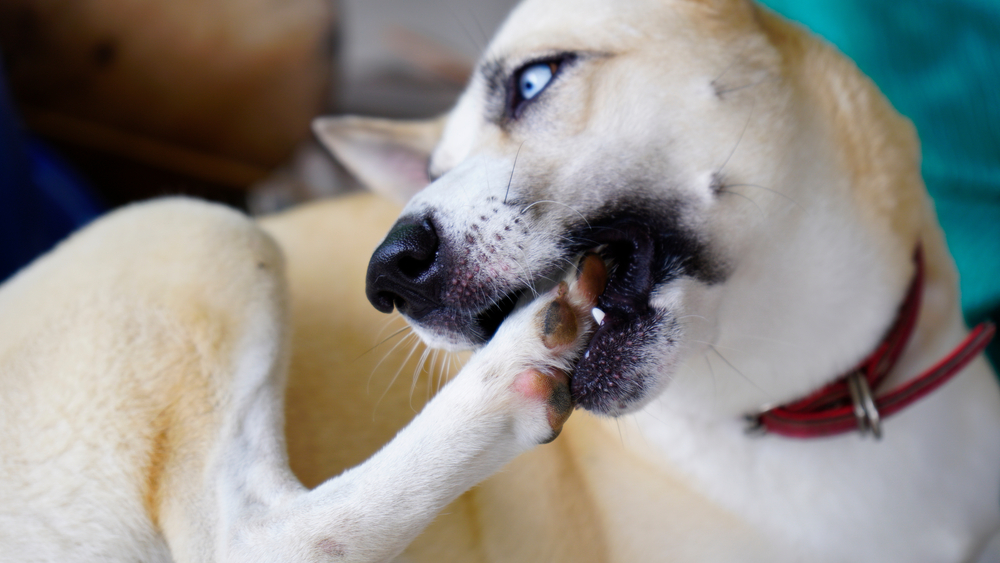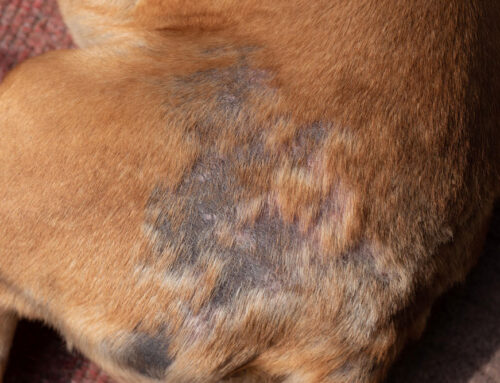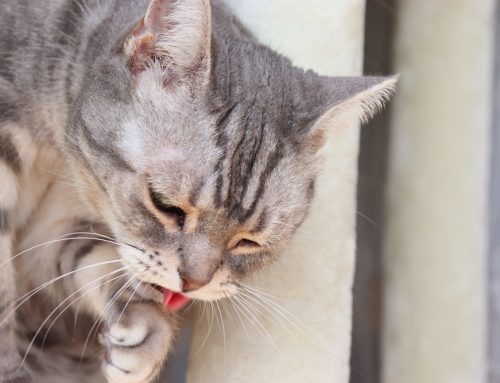Itchy pets are unhappy pets. Persistent discomfort from irritated skin is not only a nuisance, but also can lead to complications that include increased stress, irritability, poor sleep, secondary skin infections, and self-induced trauma.
The Tidmore Veterinary Hospital team understands your pet’s misery and can help determine and treat their discomfort at its source. Let’s narrow down the possible causes for your pet’s non-stop scratching, chewing, and licking.
Your pet’s skin is dry and flaky
Dry skin that produces dandruff-like flakes along the pet’s back and the hair shaft close to the skin is mostly noticed on dark-coated dogs and cats. Severely affected pets also may have red, irritated, skin with visibly dry and scaly patches.
Dry skin often indicates an underlying problem, such as environmental allergies (e.g., pollen, dust, grasses, and mold), although exceptionally dry air in winter can also deplete the skin’s moisture and cause frustrating itchiness. In addition to managing your pet’s allergies, your veterinarian may recommend supplementing their diet with skin-nourishing omega-3 fatty acids.
For an in-depth look at environmental allergies in pets, visit our previous blog post on pet allergy myths.
Your pet has fleas
Fleas are not only gross—their bite can be highly irritating to pets and cause an allergic reaction. Fleas themselves can be challenging to spot with the naked eye, but flea droppings (i.e., flea dirt [frass]), which are actually digested blood, are unmistakable. The droppings are most commonly found around the tail base, on the abdomen, and along the spine.
To look for flea dirt, gently part your pet’s hair against the grain (i.e., pet them in a backward motion from tail to head). Using a flea comb, withdraw any black pepper-like debris, or press on the area with a damp paper towel. Flea dirt will turn rust red when moistened.
If you find live fleas or flea dirt on your itchy pet, don’t panic—contact Tidmore Veterinary Hospital for our step-by-step instructions on eliminating these prolific pests and easing your pet’s discomfort.
Your pet has red bumps, lesions, or welts
Rash-like skin irritations can indicate bacterial or fungal infections, environmental allergies, or self-trauma from persistent scratching, chewing, or licking. If you notice visible or palpable changes on your pet’s skin, such as redness, persistent wetness, hair loss, bite wounds, bumps, hives, or sores, schedule an appointment at Tidmore Veterinary Hospital as soon as possible. Left untreated, your pet’s continued scratching or licking can lead to persistent and painful conditions, such as hot spots or lick granulomas.
Your pet has mange
Sarcoptic mange (i.e., scabies) is a contagious skin disease in dogs and humans. Scabies is a mite infestation caused by a highly irritating parasite (i.e., Sarcoptes scabiei) that burrows in your pet’s skin and causes intense itching and hair loss. Untreated sarcoptic mange can result in skin thickening and darkening, especially on the ears, legs, and abdomen. This condition is zoonotic, meaning that mange can be transmitted from dogs to humans. Cats may be affected by a similar—but non-zoonotic—mite, Notoedres cati, which causes facial itching and scabbing.

Your pet is overdue for a bath or grooming
Dirty, matted, or oily hair traps debris and allergens and prevents air from reaching your pet’s skin, which creates a prime environment for irritating microorganism overgrowth. Regular bathing removes dirt, grime, and excess oils, reduces shedding, promotes healthy blood flow, and hydrates the skin’s protective barrier.
If your itchy pet is ready for a bath or grooming, and free from visible skin irritants and parasites, ensure you use a moisturizing shampoo and conditioner and that you rinse your pet thoroughly, because product residue can perpetuate dry skin.
Your pet has a food allergy
Food allergies are hypersensitivity reactions to an ingredient in your pet’s food, usually a protein. Because pets express allergies through their skin, food-allergic pets may experience intense itching along with gastrointestinal signs, such as vomiting, diarrhea, loose stool, nausea, and gas.
Although the two terms are often used interchangeably, food allergies and food sensitivities are separate issues. True food allergies are triggered by the pet’s immune system, while sensitivities are generally localized to the gastrointestinal tract. Both conditions require an elimination diet or feeding trial to reduce the pet’s allergen exposure and, ideally, to determine the ingredient that is responsible for your pet’s clinical signs.
Your pet is nervous, anxious, or stressed
Your pet’s emotional health can shape their physical behavior. Stressed, frustrated, bored, or fearful pets may increasingly scratch, chew, and lick to alleviate anxiousness and tension.
Behavior-related conditions are diagnosed by first ruling out any medical causes (e.g., those described above) and treating any secondary infections or trauma. Long-term treatment may require identifying and reducing environmental stressors, behavior-modifying medications, and appropriate exercise.
This article only scratches the surface of pet skin irritants. For the most in-depth assessment, personalized care, and targeted relief, schedule an appointment for your itchy pet at Tidmore Veterinary Hospital.








Leave A Comment